($100, Cru Artisan): I can see the rolling eyes. A hundred bucks for an unknown wine from, where? Sicily? Yes. I can’t pretend to know how people should spend their money on wine. But what I can tell you is that this is a special wine, delivering the ethereal Burgundian combination of flavor without weight. … Read more
Category Archives: Italy
Allegrini, Veronese IGT (Italy) Palazzo della Torre 2011
($18): Allegrini, a leading Veneto producer, has adapted Amarone-like vinification to this wine, a blend of mostly Corvina and Rondinella, the grapes commonly used for Valpolicella. A small proportion of grapes are dried and added to the fresh wine the following fall, which starts another fermentation, which adds extra oomph to the wine. … Read more
Tenuta di Salviano, Lago di Corbara DOV (Umbria, Italy) Turlo 2012
($14): What a bargain! This blend of Sangiovese (50%), Cabernet Sauvignon (30%), and Merlot has a charming rusticity amplified by uplifting Italian acidity. The blend works since the Cabernet adds herbal qualities without dominating. The wine’s impressive density–without being heavy–makes it a perfect choice for hearty pasta dishes this winter.… Read more
Tenuta San Guido, Toscana IGT (Tuscany, Italy) Guidalberto 2013
($45): Tenuta San Guido, the producer of Sassicaia, first introduced Guidalberto in 2000. Mistakenly thought by many to be a “second” wine of Sassicaia because all of the grapes come from Tenuta San Guido’s vineyards, it most certainly is not. The blend of grapes is entirely different. … Read more
Castello di Volpaia, Chianti Classico DOCG (Tuscany, Italy) Riserva 2012
($28): Castello di Volpaia consistently makes wonderful Chianti Classico. This Riserva combines a good density of black cherry-like fruit and a lovely herbal earthy component. A beefy wine, they’ve imbued it with power without sacrificing finesse or a graceful signature. Despite its intensity, it’s still clearly identifiable as Chianti Classico because of the great Tuscan acidity and savory notes. … Read more
Tenute Silvio Nadri, Brunello di Montalcino (Tuscany, Italy) 2010
($54): 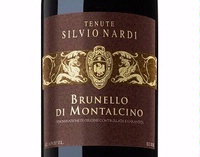 Tenute Silvio Nardi has vineyards in the northwest and southeast section of the Brunello di Montalcino zone. In addition to their two outstanding single-vineyard wines, Poggio Doria and Manachiara, that they produce from those respective zones, they blend grapes to this fine, easy-to-recommend Brunello. … Read more
Tenute Silvio Nardi has vineyards in the northwest and southeast section of the Brunello di Montalcino zone. In addition to their two outstanding single-vineyard wines, Poggio Doria and Manachiara, that they produce from those respective zones, they blend grapes to this fine, easy-to-recommend Brunello. … Read more
Masseria San Magno, Castel del Monte (Puglia, Italy) Nero di Troia 2011
($27): 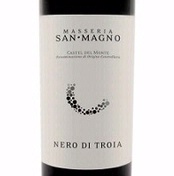 Puglia’s Nero di Troia grape is a hidden gem. Another ancient export from Greece, Nero di Troia (Black from Troy) delivers a winsome combination of fruit and earth when handled correctly, as in this case. Masseria San Magno’s has an enticing, gamey nuance and a vivacity that balances its black-fruit footprint. … Read more
Puglia’s Nero di Troia grape is a hidden gem. Another ancient export from Greece, Nero di Troia (Black from Troy) delivers a winsome combination of fruit and earth when handled correctly, as in this case. Masseria San Magno’s has an enticing, gamey nuance and a vivacity that balances its black-fruit footprint. … Read more
COS, DOC Sicilia (Italy) “Pithos” 2013
($34): COS, one of the top producers in Sicily, works magic with Nero d’Avola and Frappato, two of the island’s indigenous red grapes. Their Pithos, a equal blend of the two grapes, is a firm, but not hard, wine that delivers lovely combination of dark cherry notes and savory earthy ones. … Read more
COS, Cerasuolo di Vittoria Classico (Sicily, Italy) “Delle Fontane” 2010
($60): 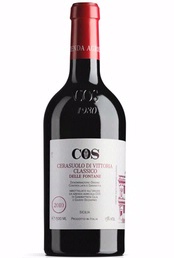 COS (the name comes from the initials of the three founders’ last names: Giambattista Cilia, Giusto Occhipinti and Cirino Strano) is one of Sicily’s best and most innovative producers. Cerasuolo di Vittoria, a red wine made from Frappato and Nero d’Avola, two grapes unique to Sicily, is that island’s only wine awarded DOCG status, Italy’s highest ranking, by the Italian government. … Read more
COS (the name comes from the initials of the three founders’ last names: Giambattista Cilia, Giusto Occhipinti and Cirino Strano) is one of Sicily’s best and most innovative producers. Cerasuolo di Vittoria, a red wine made from Frappato and Nero d’Avola, two grapes unique to Sicily, is that island’s only wine awarded DOCG status, Italy’s highest ranking, by the Italian government. … Read more
Tenute Silvio Nardi, Brunello di Montalcino (Tuscany, Italy) Vigneto Manachiara 2010
($97, Kobrand Wine And Spirits): 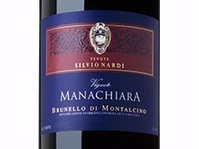 Tenute Silvio Nardi, now run by his daughter, Emilia Nardi, remains of the Brunello’s top producers. They have vineyards in both the northwest and southeast portions of the Montalcino zone, which produces grapes of different styles because of the difference in soil and climate in each of the areas. … Read more
Tenute Silvio Nardi, now run by his daughter, Emilia Nardi, remains of the Brunello’s top producers. They have vineyards in both the northwest and southeast portions of the Montalcino zone, which produces grapes of different styles because of the difference in soil and climate in each of the areas. … Read more
Monte Bernardi, Chianti Classico Riserva (Tuscany, Italy) Sa’Etta 2011
($41, T. Edward Wines): Some Tuscan producers refer to their wines made exclusively from Sangiovese grown in the Chianti Classico region as a Super Tuscan wine. Others, such as Monte Bernardi, prefer to label theirs as Chianti Classico Riserva. This wine shows that Chianti Classico can have all of the appeal and pizzazz of the so-called Super Tuscans. … Read more
Giacomo Borgogno & Figli, Barolo (Piedmont, Italy) Fossati 2008
($68, T. Edward Wines): As of 2008 Borgogno decided to bottle wines from specific vineyards separately. Prior to that time, they blended the wines and labeled them as Barolo or Barolo Riserva. Fossati, a cru or vineyard (as opposed to a proprietary name), is located in the village of Barolo itself. … Read more
Giacomo Borgogno & Figli, Barolo (Piedmont, Italy) Cannubi 2008
($134, T. Edward Wines): Wines from Cannubi, one of the very best vineyards in the Barolo zone, are capable of an amazing combination of grace and power. While some growers may attempt to capitalize on the name Cannubi to sell their wines, others aim to express the grandeur the vineyard has to offer. … Read more
Rio Maggio, Offida Pecorino DO (Marche, Italy) Pecorino “Colle Monteverde” 2014
($18, T. Edward Wines): Pecorino is also a grape, not only a cheese. And one that is capable of producing lively white wines with refreshing vibrancy, such as this one. This light wine delivers a precise cutting edge without being aggressive. … Read more
Prá, Soave (Veneto, Italy) “Otto” 2014
($13): 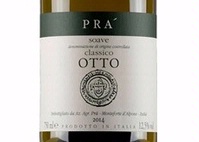 Soave, an underappreciated region in Italy, is home to wonderfully satisfying white wines when made by a top producer, such as Prá. Even this one, one of Prà’s basic bottlings, delivers good intensity offset by characteristic Italian verve. Round enough to sip on its own, it has sufficient structure to pair well with sushi.… Read more
Soave, an underappreciated region in Italy, is home to wonderfully satisfying white wines when made by a top producer, such as Prá. Even this one, one of Prà’s basic bottlings, delivers good intensity offset by characteristic Italian verve. Round enough to sip on its own, it has sufficient structure to pair well with sushi.… Read more
Agricola Querciabella, IGT Toscana (Italy) “Camartina” 2010
($140): 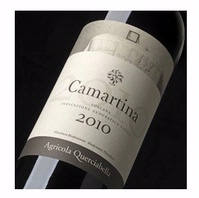 Founded only in 1974, Querciabella has leapt to the top tier of Tuscan producers, making an exceptional range of both red and white wines. Camartina, a blend of roughly 2/3 Cabernet Sauvignon and 1/3 Sangiovese, is their flagship red. It’s always a majestic wine, but the 2010 is even more extraordinary than usual. … Read more
Founded only in 1974, Querciabella has leapt to the top tier of Tuscan producers, making an exceptional range of both red and white wines. Camartina, a blend of roughly 2/3 Cabernet Sauvignon and 1/3 Sangiovese, is their flagship red. It’s always a majestic wine, but the 2010 is even more extraordinary than usual. … Read more
Mastroberardino, Taurasi Riserva (Campania, Italy) “Radici” 2006
($80): 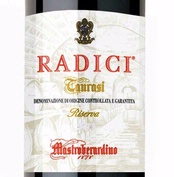 Though I’ve recommended this wine before, my enthusiasm for it just keeps increasing after tasting it a few more times. Mastroberardino is perhaps the finest producer in Campania (full disclosure, I’ve not tasted wines from every producer located in that region around Naples, but I’ve also not found any yet that consistently stand up to those of Mastroberardino.) … Read more
Though I’ve recommended this wine before, my enthusiasm for it just keeps increasing after tasting it a few more times. Mastroberardino is perhaps the finest producer in Campania (full disclosure, I’ve not tasted wines from every producer located in that region around Naples, but I’ve also not found any yet that consistently stand up to those of Mastroberardino.) … Read more
Bisol, Valdobbiadene Prosecco Superiore (Veneto, Italy) “Crede” NV
($25, Vias Imports): Prosecco is all the rage these days and consumers can find them at for $10 a bottle. So why pay more for Bisol’s? Because it is a cut above most of them delivering firmness combined with a flowery aspect. … Read more
Frescobaldi, Chianti Rufinà Reserva (Tuscany, Italy) “Nipozzano” 2011
($19): The Rufinà subzone of Chianti, the vast area between Florence and Siena, is not as well known as the Chianti Classico subzone. Indeed, the name is often confused with Ruffino, a well-known Tuscan producer. The Rufinà zone is home to an array of top producers, including Frescobaldi, a name that is iconic in Italian wine. … Read more
Le Caniette, Rosso Piceno DOC (Marche, Italy) “Morellone” 2008
($36, Montcalm Wine Importers, Ltd): A blend of Montepulciano (70%) and Sangiovese, Le Caniette’s Morellone has weight and convey an alluring dark cherry fruit quality. Nicely polished, it retails a hint of charming rusticity in the finish, which frankly, adds to its appeal. … Read more
Zuani, Collio Bianco (Friuli, Italy) “Vigne” 2013
($23): This charming white is an unusual blend of Friulano, Chardonnay, Sauvignon and Pinot Grigio. It’s a blend that somehow works, delivering a subtle whiff of white flowers, melon-like nuances and crisp balancing acidity that add vibrancy. Overall, it has a softer, gentler profile that makes it work equally well before or with dinner.… Read more
Pieropan, Soave Classico (Veneto, Italy) 2014
($20, Pieropan Wines USA): 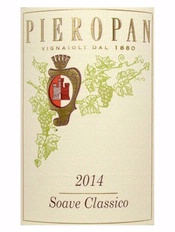 Sadly, Soave has been one of the most abused names in wine, with many examples in the past — and still some today — that are dilute and without character. What makes it a real shame is how good and exciting authentic Soave, such as this one, can be. … Read more
Sadly, Soave has been one of the most abused names in wine, with many examples in the past — and still some today — that are dilute and without character. What makes it a real shame is how good and exciting authentic Soave, such as this one, can be. … Read more
Lunae, Colli di Luni DOC (Liguria, Italy) Vermentino “Etichetta Nera” 2014
($40, Montcalm Wine Importers, Ltd): Forty dollars for a Vermentino, a wine more often found in the under $20 category, is an extraordinary price. But this one, Lunae’s Black Label and the winery’s flagship, is an extraordinary wine. After tasting the 2014, I can understand why Gambero Rosso, the prestigious Italian wine guide, has awarded the wine Tre Bicchieri (their highest accolade) for six consecutive years. … Read more
Girlan, Alto Adige/ Südtirol (Italy) Pinot Bianco 2014
($20, Montcalm Wine Importers, Ltd): This clean and fresh Pinot Blanc conveys a lovely delicacy, but has sufficient weight — and a subtle creaminess — to complement a light pasta course. Its floral and lacey character also makes it a perfect choice as either a stand-alone aperitif.… Read more
Girlan, Alto Adige/ Südtirol (Italy) Lagrein 2012
($20, Montcalm Wine Importers, Ltd): The name of the DOC — either Alto Adige or Südtirol — reflects the dual identity of this part of northern Italy, which abuts Austria. But this is a singularly appealing wine. Lagrein, not a well-known grape, should have more widespread popularity because it can produce a reasonably robust wine devoid of searing tannins and balanced by uplifting acidity. … Read more
Illuminati, Cerasuolo d’Abruzzo DOC (Italy) “Campirosa” 2014
($13, Montcalm Wine Importers, Ltd): Though its enticing cherry-red hue says rosé, this is not your standard innocuous one, but rather a rosé masquerading as a light red wine–and a delightful one at that. Fresh and bright, with hints of wild strawberries, the barest hint of a tannic structure and whiff of bitterness in the finish remind you it was made from a light pressing of the Montepulciano grape. … Read more
Gregorina, Sangiovese di Romagna Superiore (Emilia-Romagna, Italy) 2012
($15, Montcalm Wine Importers, Ltd): Sangiovese, Italy’s most widely planted red grape, is held in high esteem in Tuscany where it is the core for Chianti, Vino Nobile di Montepulciano and the only grape allowed for Brunello di Montalcino. Somehow, its glow fades as it hits the Emilia Romagna border, which is a shame because it can produce great value wine there, as Gregorina demonstrates. … Read more
Illuminati, Montepulciano d’Abruzzo () “Riparosso” 2013
($13, Montcalm Wine Importers, Ltd): Talk about charming rusticity. This Montepulciano d’Abruzzo is a cut above your basic “pizza wine,” imparting a lovely combination of cherry-like notes and lively acidity. Fresh and vigorous, it’s just what you need for an “everyday” wine for pasta bathed in a garlicky tomato sauce.… Read more
Arnaldo-Caprai, Montefalco Sagrantino (Umbria, Italy) “Collepiano” 2009
($60, Folio Fine Wine Partners): Montefalco Sagrantino, similar to Barolo and Taurasi, can be an impenetrable wine when young because of substantial tannins. The tannins in this massive 2009 from Arnaldo-Caprai, perhaps the leading producer in the DOCG, are still very evident, even at six years of age, but they are not aggressive or astringent. … Read more
Arnaldo-Caprai, Montefalco Rosso (Umbria, Italy) 2012
($20, Folio Fine Wine Partners): Arnaldo-Caprai, one of the great names in the DOCG of Montefalco Sagrantino, also makes an easy to recommend Montefalco Rosso, a junior varsity version of that DOCG. Whereas regulations for Montefalco Sagrantino require exclusive use of Sagrantino, winemakers are permitted to blend other grapes in Montefalco Rosso, which makes it a far more approachable wine. … Read more
Donnafugata, DOC Sicilia Bianco (Italy) “Anthília” 2014
($17, Folio Fine Wine Partners): 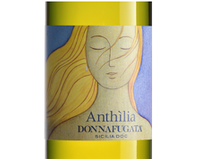 Vibrancy is one of the surprising characteristics about wines from Sicily, a Mediterranean island where you’d think the heat would produce very ripe grapes lacking in acidity. It’s certainly not the case with the wines from Donnafugata, one of island’s leading producers. … Read more
Vibrancy is one of the surprising characteristics about wines from Sicily, a Mediterranean island where you’d think the heat would produce very ripe grapes lacking in acidity. It’s certainly not the case with the wines from Donnafugata, one of island’s leading producers. … Read more
Monteverro, IGT Toscana (Italy) Vermentino di Monteverro 2014
($25, Opici Wines): 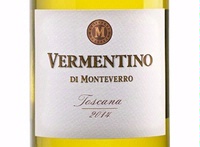 Monteverro, a relatively new player in Bolgheri sweepstakes, is aiming to join the Ornellaia and Sassicaia Super Tuscan club with their red wine. So it came as a great surprise to see the quality of this white. Their 2014 Vermentino is crisp, with an enticing floral whiff. … Read more
Monteverro, a relatively new player in Bolgheri sweepstakes, is aiming to join the Ornellaia and Sassicaia Super Tuscan club with their red wine. So it came as a great surprise to see the quality of this white. Their 2014 Vermentino is crisp, with an enticing floral whiff. … Read more
Monteverro, Toscana Rosso IGT (Tuscany, Italy) “Verruzzo di Monteverro” 2013
($29, Opici Wines): Monteverro, whose aim is to join the top end Maremma producers, has crafted this seamless blend of Merlot, Cabernet Franc, Cabernet Sauvignon and Sangiovese as their “entry level” wine. It has the richness expected from the Bordeaux varieties grown in that region, but unexpected brightness and liveliness from Sangiovese, a grape that does not ordinarily thrive in the Maremma. … Read more
Arnaldo-Caprai, Colli Martani Grechetto (Umbria, Italy) “Grecante” 2013
($20): Arnaldo-Caprai, one of the top producers of Sagrantino, a sturdy red from Umbria, also makes this enticing white from Grechetto, a little known — at least in the U.S. — white grape. Mineraly and slightly creamy, it has good depth and a lovely firmness. … Read more
Col d’Orcia, Rosso di Montalcino (Tuscany, Italy) 2012
($22, Palm Bay International): I’m a sucker for well-made Rosso di Montalcino because they deliver a glimmer of the grandeur of Brunello at an affordable price without having to cellar them. Not a boisterous wine, Col d’Orcia’s 2012 Rosso di Montalcino has a great perfume, followed by seductive elegance supported by fine tannins. … Read more
Col d’Orcia, IGT Toscana (Italy) “Spezieri” 2013
($14, Palm Bay International): When I’m looking for simple enjoyable wine for an uncomplicated informal meal, or we’re having a crowd over for burgers, I often turn to my favorite producers and what they call their “entry” level wine. In Tuscany, they’re usually a blend of Sangiovese, the region’s mainstay grape, with something else, in this case Ciliegiolo. … Read more
Col d’Orcia, Brunello di Montalcino (Tuscany, Italy) Poggio al Vento 2006
($120, Palm Bay International): 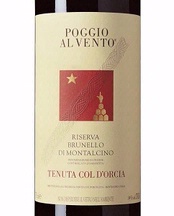 It should come as no surprise that this is an outstanding wine. The producer is one of Montalcino’s best, the vineyard’s location is ideal with perfect elevation and exposure, and the vintage is outstanding. At almost a decade of age, the wine is just starting to show its grandeur. … Read more
It should come as no surprise that this is an outstanding wine. The producer is one of Montalcino’s best, the vineyard’s location is ideal with perfect elevation and exposure, and the vintage is outstanding. At almost a decade of age, the wine is just starting to show its grandeur. … Read more
Teruzzi & Puthod, Vernaccia di San Gimignano (Tuscany, Italy) 2014
($12, Palm Bay International): Despite being Italy’s 1st DOC (Denominazione Origine Controllata) Vernaccia di San Gimignano remains under the radar, which is great for consumers because, as this wine shows, they can offer great value. Fresh, crisp and cutting, this bright wine is easy to recommend. … Read more
Rocca delle Macìe, Chianti Classico Gran Selezione (Tuscany, Italy) “Sergio Zingarelli” 2010
($130, Palm Bay International): 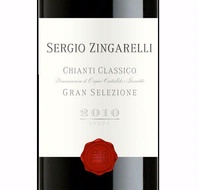 Gran Selezione, a category that debuted only in 2014, is intended to be for Chianti Classico of exceptional character. For a wine to receive that designation it must come from estate grapes (no purchased fruit), be aged even longer than a Chianti Classico Riserva and pass a tasting panel. … Read more
Gran Selezione, a category that debuted only in 2014, is intended to be for Chianti Classico of exceptional character. For a wine to receive that designation it must come from estate grapes (no purchased fruit), be aged even longer than a Chianti Classico Riserva and pass a tasting panel. … Read more
Rocca delle Macìe, Chianti Classico (Tuscany, Italy) 2013
($16, Palm Bay International): Wines from the Chianti Classico region remain extremely popular. Indeed, we Americans drink more of them than the Italians. And this one from Rocca delle Macìe, a top producer, shows why. The 2013 is fresh with a food-enhancing bite and the non fruit — earthy — flavors that make Chianti Classico so appealing. … Read more
Ferrari, Trentino DOC (Italy) Blanc de Blancs “Perlé” 2007
($42, Palm Bay International): Ferrari is one of, if not the, top producer of sparkling wine in Trentino. This splendid one, Perlé, is made entirely from Chardonnay grown in a single vineyard. A firm backbone of acidity supports and balances its suave creaminess. … Read more
Planeta, Etna Bianco DOC (Sicily, Italy) 2014
($24): At first glance, Sicily seems too hot to grow grapes for top quality wines. Indeed, it’s the mountains there that supply the needed elevation to keep the grapes cool as they ripen and that explain why Sicily is home to some fabulous wines, such as this one. … Read more
Travaglini, Gattinara Riserva (Piedmont, Italy) 2009
($60, Palm Bay International): Gattinara, a tiny appellation of only about 250 acres in Piedmont lies north of Barolo and like its more esteemed neighbor, uses on the Nebbiolo grape exclusively. Travaglini, who owns about 125 acres, or roughly half of the appellation and is the major producer, bottles an array of wines labeled Gattinara. … Read more
Fontanafredda, Barolo (Piedmont, Italy) Serralunga d’Alba 2010
($45, Palm Bay International): Add Fontanafredda’s Serralunga d’Alba to your list of 2010 Barolo wines for your cellar. In a decade you will not be disappointed. The power that follows the enormous initial floral impact is unexpected, startling and then captivating. … Read more
Feudi di San Gregorio, Taurasi (Campania, Italy) 2010
($40, Palm Bay International): 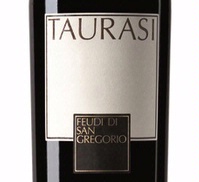 There is no question in my mind that the wines from Taurasi, a small DOCG in Campania, rank with Italy’s, and the world’s, greatest wines. The Aglianico grape thrives in the climate and volcanic — it’s near Vesuvius — soil of the region.… Read more
There is no question in my mind that the wines from Taurasi, a small DOCG in Campania, rank with Italy’s, and the world’s, greatest wines. The Aglianico grape thrives in the climate and volcanic — it’s near Vesuvius — soil of the region.… Read more
Castello di Verrazzano, Chianti Classico Riserva (Tuscany, Italy) 2011
($40, Palm Bay International): Castello di Verrazzano’s Chianti Classico Riserva comes from grapes grown in their vineyards that are at a higher elevation on the slope than other parcels. The erosion and drainage at that part of the slope always results in concentrated grapes that produce powerful wines. … Read more
Tenuta Le Potazzine Gorelli, Brunello di Montalcino (Tuscany, Italy) 2010
($64): Potazzine Gorelli’s 2010 Brunello ranks with the best from that vintage. It has a beguiling combination of dark cherry-like flavors, firm — not hard — tannins and a paradoxical delicacy. Everything is in harmony. Flavors unfold as it sits in the glass and dance across the palate. … Read more
Talenti, Brunello di Montalcino (Tuscany, Italy) 2010
($47): 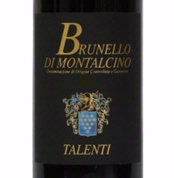 It’s worth repeating: The 2010s from Brunello di Montalcino are staggeringly good. By and large, they are beautifully balanced with tannins that lend support without being astringent. Talenti’s was one of my favorites from the line up of 2010 Brunello I tasted in Montalcino this past February. … Read more
It’s worth repeating: The 2010s from Brunello di Montalcino are staggeringly good. By and large, they are beautifully balanced with tannins that lend support without being astringent. Talenti’s was one of my favorites from the line up of 2010 Brunello I tasted in Montalcino this past February. … Read more
M. Marengo, Barolo (Piedmont, Italy) “Bricco delle Viole” 2010
($60, Marc de Grazia Selection): I was unfamiliar with this producer until recently when I had the opportunity to taste a range of their wines at a tasting in Boston put on by their importer. Now, I’ll buy anything they make. … Read more
Fratelli Revello, Barolo (Piedmont, Italy) “Gattera” 2010
($52, Marc de Grazia Selection): Similar to many other Barolo producers, Fratelli Revello made more than one Barolo in 2010, which creates a potentially confusing situation for consumers. This one, Gattera, is from a single vineyard in La Morra and is aged in large old barrels. … Read more
